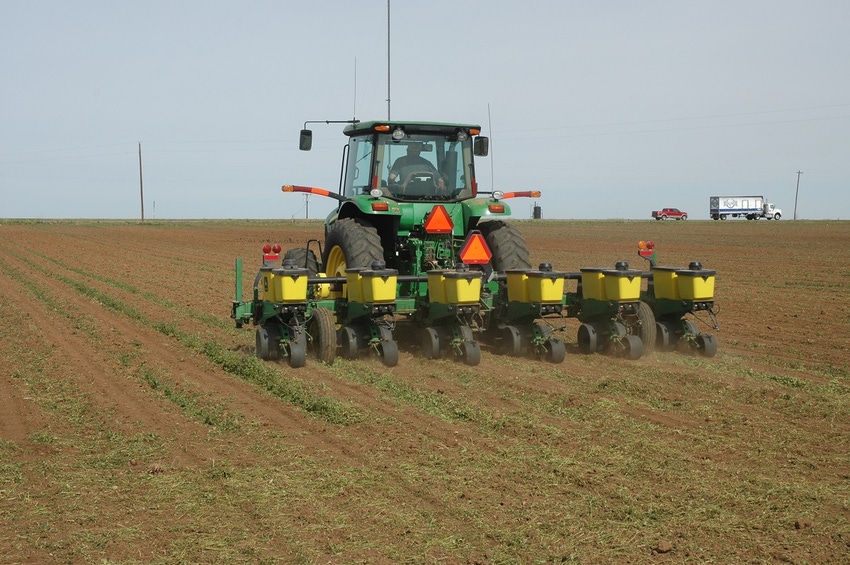April 5, 2016

Texas could see an increase of 300,000 acres of corn planted for 2016 according to a recent U.S. Department of Agriculture expected plantings report, which confirmed a broad-scale increase in corn acreage across the nation.
Significant shifts have been seen on the western edge of the Corn Belt from North Dakota to Texas as corn acres are projected to be up 2.25 million acres, said Dr. Mark Welch, Texas A&M AgriLife Extension Service grain marketing economist, College Station.
Texas is projected to plant 2.6 million acres of corn in 2016 compared to 2.3 million acres in 2015. The 300,000-acre increase is attributed to wet conditions during the fall, which prohibited farmers in the Central Texas Blacklands region and along the Interstate 35 corridor from planting wheat, Welch said.
“That left many farmers leaning towards corn since the moisture was favorable and corn budgets looked better versus other commodities,” Welch says.
The threat of the sugarcane aphid encouraged Texas farmers to opt for corn with already record-high sorghum yields booked in 2015.
In his recent Feed Grain Outlook report, Welch says the USDA’s expected plantings report, “if realized and yields are at or near trend line, corn supplies could reach 16 billion bushels and carry over 2.3 billion bushels.”
LESS WHEAT IN 2016
Other grains will see fewer planted acres, Welch says. U.S. wheat acres are projected to be down 5 million acres compared to 2015 and sorghum down 1.2 million acres.
“We were already expecting more corn acres to be planted this year and the USDA report confirmed it,” he adds.
Though corn prices have fallen due to U.S. farmers’ intentions to plant more corn, farmers can offset that revenue loss with more volume, Welch says.
“If farmers feel that they’ve got the moisture and there are favorable chances for moisture to continue through the growing season, they can make more bushels to make up for the lower price.”
For the latest on southwest agriculture, please check out Southwest Farm Press Daily and receive the latest news right to your inbox.
Another factor is the financial capacity of some farming operations. Welch says for producers carrying over large debt from the previous year, a big question is will they have enough capital needed to plant a new crop?
“If not, will there be someone else to come in and pick up the land (in time before the planting window closes)?” Welch asks.
Low commodity prices and increased loan demand are concerns for ag lenders across the country. Several farm income safety net programs, such as crop insurance and the Agriculture Risk Coverage, or ARC, program in the farm bill, offer lower levels of security in times of low commodity prices.
“But that all depends on how each farm is structured and cost of production,” Welch says.
Some farmers in Texas have been diversifying by planting oilseed crops to offset depressed prices in corn, cotton and other commodities, Welch says.
“Overall, the USDA report was a wake-up call in that we are capable of planting considerably more corn compared to recent years,” Welch says.
Welch distributes a Feed Grain Outlook, which can be subscribed to via email at [email protected] or by calling 979-845-8011.
You May Also Like




